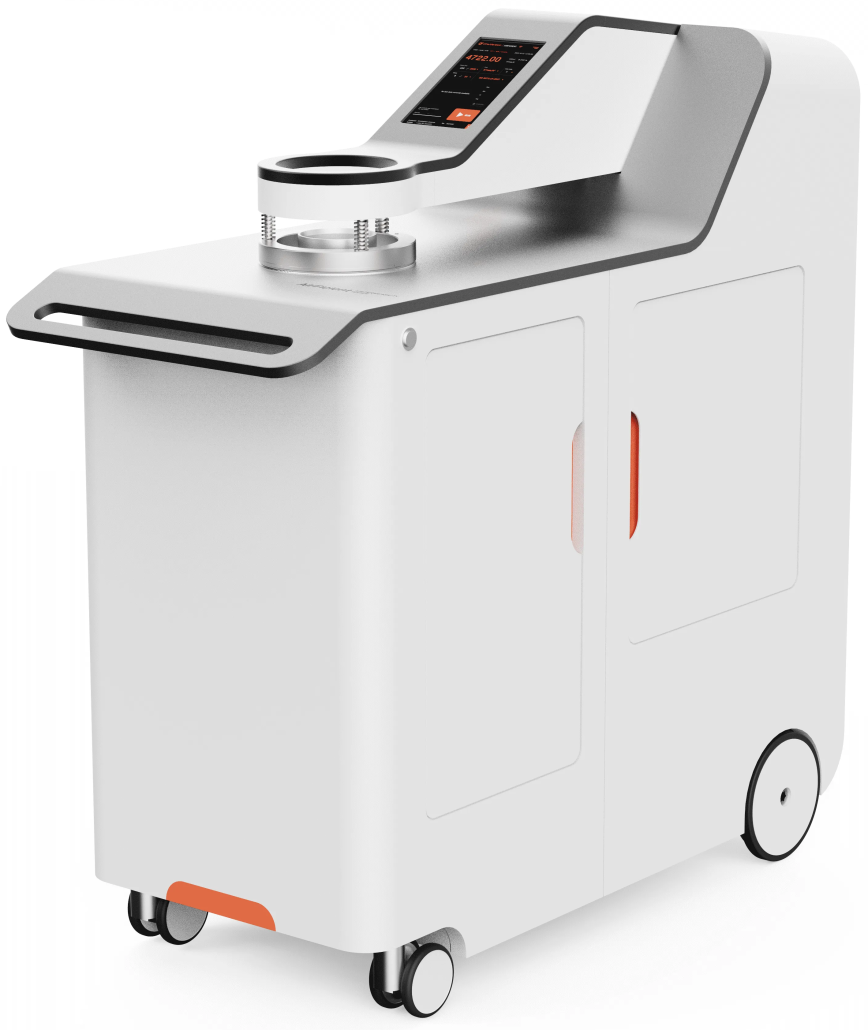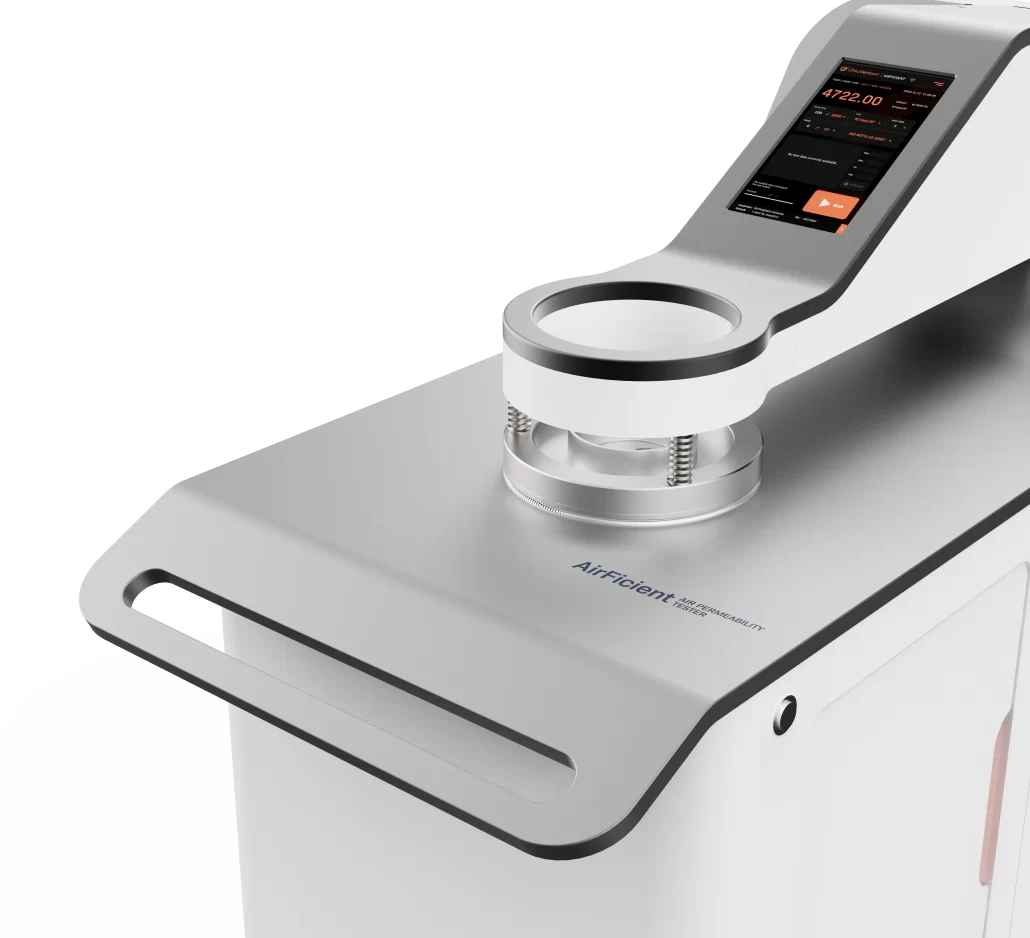What do you look for when shopping for clothes? Do you consider the material used to make it? Do you look at the brand that made it? Or, perhaps, you only care about its outward appearance and the sense of fashion that the cloth brings out. While all those are crucial factors to consider, do not overlook the breathability of the fabric as one key factor. Fabric breathability is especially important when dealing with clothes such as sportswear, medical textiles and any other gear worn outdoors. I mean, the last thing you want is to get all sweaty and dehydrated while simply trying to enjoy the outdoors. And not only are impermeable clothes uncomfortable, but they may even pose health hazards when worn for long.
But, the big question is, just how do you determine how porous and breathable a particular fabric is? Well, this is where air permeability tests come in. And among the top rated permeability tests in the world is the ASTM test. Let’s consider what this test entails and how it compares with other similar tests.
What is the ASTM air permeability test?
ASTM stands for American Society for Testing and Materials. The ASTM air permeability test is a standard method used to measure the permeability of different fabrics. It covers a wide range of tests, including testing the permeability of water vapor, gas and moisture. However, the test mainly aims to determine how easily air can pass through a particular fabric material. In turn, this makes it possible to measure the breathability and porosity of the fabric.
Most fabrics used in the market can undergo the ASTM test, including heavy blankets, layered fabrics, napped fabrics, coated fabrics, pile fabrics, fabrics for airbags, knitted fabrics, laminated fabrics, as well as woven and non-woven fabrics. Additionally, materials with water-resistant properties or finishes that affect permeability levels can also undergo the permeability test.
Yet, the ASTM test does more than just provide the standard method to measure and evaluate the air permeability of fabrics. It also provides crucial guidelines and policies for the conditions necessary to carry out sample preparation and testing. For example, the permeability test provides suggestions on how to incorporate the density of the fabrics, the presence of any finishing and the sizes of the pores; three essential factors that tend to affect the results of the test. By doing so, these guidelines help to ensure that the firms and companies in the textile industry always produce accurate test results. Maintaining quality control throughout ensures this.
What is the ASTM D737 standard?
The American Society for Testing and Materials founded the ASTM D737 standard. It uses the Frazier Air Permeability Tester to determine the rate at which air flows through a particular fabric, usually under specified pressure differentials. The test results are then quantified in cubic feet per minute per square foot (CFM/ft2).
The ASTM D737 standard method is mainly used by researchers and manufacturers working in the textile industry. By determining the air permeability of the fabrics, researchers are able to determine the suitability of the material in the market. On the other hand, it provides insight about the quality of the material to manufacturers, helping them make wise decisions about the production of the fabric.
How does the ASTM air permeability test compare to other air permeability test methods?
While the ASTM air permeability test is a popular standard method in the textile industry, it is not the only test available. On the contrary, there are many other tests that are also used to determine the air permeability of fabrics. The three most commonly used permeability test standards are:
-
ASTM D737
-
ISO 9237
-
BS EN ISO 9237
Just like the ASTM D737, both the ISO 9237 and the BS EN ISO 9237 offer accurate results and are a crucial addition in the textile industries. However, when choosing which test method to use, the clients should consider two key factors to help them make the right choice: The target market and the requirements of their products and customers.
When targeting a market, it is most appropriate to apply the ASTM D737 test when dealing with products intended for sale in the United States. On the other hand, if you intend to sell the products in international countries, then you should use the ISO 9237 and the BS EN ISO 9237 as the most suitable standard methods.
Also, clients should consider the specific requirements of their products and customers. For example, if the manufacturer plans to export the product to any European country, they should use ISO 9237, as this is the standard most customers in the area prefer. Similarly, manufacturers selling fabrics in the UK market would need to use either the BS EN ISO 9237 or the BS 5636 test standard. And besides these two factors, the choice for which air permeability test to use would also come down to the personal preference of the manufacturer.
What is the difference between ASTM D737 and ISO 9237?
As mentioned above, the ASTM D737 and ISO 9237 are among the most common air permeability test standards applied by manufacturers and researchers. Both tests use the same test equipment, an air permeability testing machine, also called air tightness testing equipment. This air permeability tester for textiles requires similar testing conditions and apply the same calculation methods to determine how permeable a fabric is. They are both performed by fastening a piece of fabric in the test chamber, then calculating the total amount of air that permeates through the material. We use a specified pressure differential to perform all of this.
Yet, despite their similarities, the ASTM D737 and ISO 9237 are quite different. Knowing the differences between these test standards is important as it can help clients decide the best permeability test for their products. Consider the three main differences that set these standards apart from each other:
-
Area of Operation
The American Society for Testing and Materials established the ASTM D737. Hence, it is commonly used in the United States. The International Organization for Standardization developed the ISO 9237 standard method. Therefore, international countries all over the world can use this test. This is why the ISO 9237 is especially popular among manufactures looking to sell their products outside of the United States.
-
Calculation Results
While both the ASTM D737 and ISO 9237 use the same test equipment and calculation methods, they report their results differently. They differ in air permeability units. The ASTM D737 test standard uses imperial units, reporting its results in cubic feet per minute per square foot of fabric (cfm/ft2). On the other hand, the ISO 9237 uses metric units, reporting in liters per square meter per second (l/m2/s). Comparing the air permeability results obtained from both of these tests for the same fabric is very challenging because these different units of measurements cannot be easily converted.
-
Range of Pressure Differentials
Both the ASTM D737 and ISO 9237 air permeability tests require conducting them under a specific pressure differential. Even so, ASTM D737 allows users to choose from a range of differentials, usually ranging from 125 to 500 Pa (which corresponds to 0.5 to 2.0 inches of water). The ASTM D737 test can use a wider range of pressure differentials to test different fabric types, including textiles with exceedingly low or exceedingly high air permeability.
As for the ISO 9237 test standard, it uses a specific, non-changeable pressure differential of 100 Pa (which corresponds to about 0.4 inches of water). Therefore, while the ASTM can test a wide range of textiles, the ISO 9237 permeability test has limitations on the fabrics it can test.
The table below provides a summary of the main differences between the ASTM D737 and ISO 9237 test standards:
| ASTM D737 | ISO 9237 |
| Developed by the American Society for Testing and Materials (ASTM) | Developed by the International Organization for Standardization (ISO) |
| Used mainly in the United States | Used internationally |
| Uses imperial units (cfm/ft2) | Uses metric units (l/m2/s) |
| Allows for a wide range of pressure differentials (125 to 500 Pa) | Uses a specific pressure differential (100 Pa) |
Curious about air permeability tester prices? Get our quick quote below.
How to perform an air permeability test according to ASTM standard?
The ASTM D737 standard uses the Frazier Air Permeability Tester to measure the rate of flow of air through fabrics. The Frazier Tester apparatus features a clamping tool that holds the textile firmly in place, and a well-designed air flow system that accurately measures the amount of air that passes through the fabric. Once we measure the air flow, we then provide the results either in cubic centimeters per second (CCS) or cubic feet per minute (CFM) per square inch of the fabric.
Here is a step-by-step guide on how to perform the air permeability test according to the ASTM standard:
Step 1
Condition the fabric in a controlled environment for at least 24 hours before the actual testing day. The ideal controlled environment as per the ASTM D737 standard guidelines is one with a temperature of 70°F and a relative humidity of 65%. Otherwise, placing the fabric in environments with different temperature and humidity levels than the recommended levels would risk causing the fabric to acquire an unstable state, in turn affecting the results.
Step 2
Cut the fabric sample to the exact size and shape as provided in the ASTM guidelines. Ensure that the sample is smooth and does not have any folds, creases or wrinkles. Then, mount it on the clamping tool of the Frazier Air Permeability Tester, doing so carefully to avoid any possible stretching or tension. Tighten the clamp and secure it tightly; this ensures that air does not leak around the edges of the fabric sample.
Step 3
After mounting the sample on the clamp, calibrate the air flow system as per the manufacturer’s instructions. The ASTM D737 test standard provides certain air flow rate levels for each type of fabric used. To adjust the rate, simply adjust the pressure of the air supply until you reach your desired rate. Alternatively, change the size of the orifice to regulate the rates in the air flow system.

Step 4
Once the air flow system has been properly calibrated, you can now begin the testing. The Frazier Air Permeability Tester directs air through the sample, then it measures the amount of air that actually passes through the fabric. You should carry out the test for about one minute, then record the results.
However, keep in mind that external factors, such as the fabric’s density, finishes used in the material, and the sizing or shape of the pores, can affect the results of the test. Hence, to ensure that you get accurate results, make sure to adhere to all the guidelines and instructions provided in the ASTM D737 standard, including the guidelines on how to go about these external factors.
How to analyse ASTM air permeability test results on textiles?
The ASTM air permeability test reports its results in either cubic meters per minute per square meter (m3/min/m2) or cubic feet per minute per square foot (cfm/ft2). Simply put, the test standard provides information on the total volume of air that passes through a specific area of the fabric under test within a set amount of time.
The higher the volume of air recorded, the more permeable and breathable the fabric is, and the lower the values, the less permeable it is. Fabrics that produce high values are ideal for breathable garments and clothes, such as sporting clothes and outdoor wear. Fabrics with low test values are desirable for making apparel that needs to be less permeable, like wind-resistant jackets or other products that require air barriers or filters.
Even so, while the results of the air permeability tests may seem clear, interpreting these is not as easy. This is because the results are usually affected by external factors and the surrounding test conditions. For instance, the presence of any coatings on the fabric’s surface greatly influences the rate at which air flows. Similarly, porosity, density and thickness of the material may also impact this rate.
Furthermore, the test conditions play a major part in determining how air flows through the fabric during testing. All these factors make it quite challenging to analyze the results obtained. Fortunately, the ASTM air permeability test provides guidelines on how to minimize the impact of these external factors, hence, increasing the accuracy and reliability of the results.
Why choose the ASTM standard for air permeability testing for fabric?
It is true that there are many air permeability tests to choose from in the industry. Yet, the ASTM standard is the best option that you could choose. This is because the permeability test provides a standardized method for measuring the flow and permeability of air through fabrics, in turn ensuring consistent accurate and reliable results. Hence, by applying the ASTM D737 air permeability test in the production process, manufacturers, researchers and business people in the textile industry can always ensure that they maintain great quality products that meet their customer expectations.
The ASTM D737 standard test not only provides information about the permeability of a material but also evaluates the uniformity of the textile. You can do this by taking several samples from different parts of the fabric and then comparing the results obtained for each of these specimens. And by determining the uniformity of the fabric, manufacturers can analyze the consistency of the properties that make up the material and also identify any variations in the production process that could affect the quality of the end product. In turn, they would be able to make wise decisions that ensure quality and performance of the products is always maintained.
How does the ASTM standard ensure fabric quality?
To ensure that the fabric produced is of excellent quality and always meets customer expectations, the ASTM standard provides standardized guidelines and specifications that all textile manufacturers should adhere to. These guidelines test all aspects of the fabric, from the physical properties of the textile to its chemical and mechanical properties.
When it comes to the physical properties of the textile, the ASTM standard measures its tensile strength, such as how easily the material breaks or elongates. As for the chemical properties, the permeability test considers the presence of any harmful substances in the fabric, such as formaldehyde, toxic chemicals or other flammable substances. As for the mechanical properties, these entail the strength and durability of the fabrics, especially when subjected under harsh conditions.
Furthermore, the ASTM standard tests both the artificial and natural fibers that make up the textile. It also provides guidelines on how to inspect the textiles visually and detect any possible defects, ensuring that the material meets quality expectations. Simply put, the ASTM air permeability test thoroughly evaluates fabrics to ensure production of only the best and most reliable materials.
Conclusion
Undoubtedly, the ASTM standard is the best test for measuring the air permeability of fabrics. This test adheres to the best standards, ensuring the best quality fabrics and textiles are always produced. Therefore, whether you are a product developer, a researcher, a manufacturer or a quality control officer working in the textile industry, then it is high time you took advantage of the ASTM air permeability test. When you do, you can rest assured of fabrics that are not only of unmatched quality but also those that can stand the very test of time!
This article provides the ASTM testing standards for air permeability test of fabric. We also offer guides for other air permeability meter standards, including ISO 9237, and ISO 9073:15. Find them here or contact us directly.
For more information on textile testing methods/standards
or textile testing machines, contact us:
What’s App: +86 180 2511 4082
Tel: +86 769 2329 4842
Fax: +86 769 2329 4860
Email: medium@chiuvention.com



